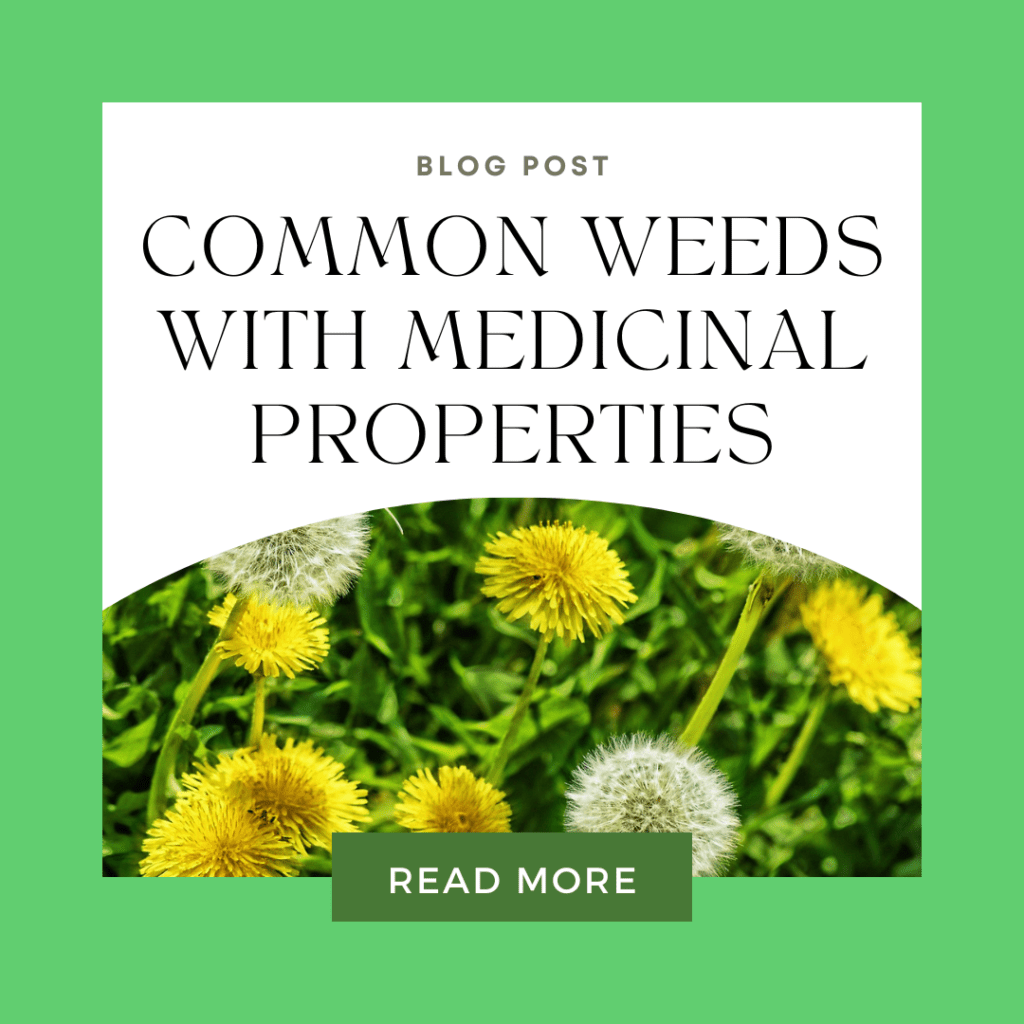In the world of gardening and landscaping, we see weeds as nuisances and want to eradicate them. However, many of these so-called “weeds” are actually valuable medicinal plants with a long history of use in traditional healing practices. From dandelions to plantain, these humble plants offer a wealth of medicinal benefits, ranging from digestive support to wound healing. In this article, we’ll explore some common weeds with medicinal properties, inviting you to discover the healing potential growing right in your own backyard.
Common Weeds with Medicinal Properties
Dandelion (Taraxacum officinale):
Often regarded as a pesky lawn invader, dandelion is a nutritional powerhouse with a wide range of medicinal properties. Its leaves are rich in vitamins A, C, and K, as well as minerals like iron and calcium. Dandelion root has been traditionally used to support liver health, aid digestion, and promote detoxification.
Chickweed (Stellaria media):
Chickweed is a delicate herbaceous plant with small, star-shaped flowers that thrive in moist, shady areas. Despite its unassuming appearance, chickweed is a valuable medicinal herb with anti-inflammatory and cooling properties. You can use it topically to soothe skin irritations, such as rashes and eczema, or consumed as a tea to support digestive health.
Plantain (Plantago major):
Plantain, not to be confused with the banana-like fruit of the same name, is a common weed found in lawns, sidewalks, and disturbed soils. Its leaves contain bioactive compounds that exhibit anti-inflammatory, antimicrobial, and wound-healing properties. You can crushpPlantain leaves and apply topically to insect bites, cuts, and minor wounds to promote healing.
Nettle (Urtica dioica):
Despite its stinging reputation, nettle is a versatile medicinal herb with a long history of use in traditional medicine. Nettle leaves are rich in vitamins, minerals, and antioxidants, making them a nourishing tonic for overall health. Nettle tea is commonly used to support the immune system, alleviate allergy symptoms, and promote kidney and urinary tract health.
Chicory (Cichorium intybus):
Chicory is a common weed with bright blue flowers that resemble miniature daisies. Its roots have been used for centuries in herbal medicine as a digestive tonic and liver stimulant. Chicory root contains inulin, a type of soluble fiber that supports digestive health by promoting the growth of beneficial gut bacteria.
Yarrow (Achillea millefolium):
Yarrow is a hardy perennial herb with feathery leaves and clusters of white or pink flowers. It has a long history of use in traditional medicine for its astringent, anti-inflammatory, and styptic properties. You can apply yarrow topically to wounds, cuts, and bruises to promote clotting and accelerate healing.
Next time you spot these common weeds in your yard or garden, consider embracing them. They are valuable medicinal allies and not adversaries to be eliminated. By learning to recognize and appreciate the medicinal properties of these humble plants, you can tap into their healing potential and incorporate them into your natural health toolkit. From dandelion detox teas to plantain poultices, the possibilities for harnessing the medicinal benefits of weeds are endless. So embrace the wisdom of the wild, and let these hidden gems transform your relationship with the plants growing right under your feet.




